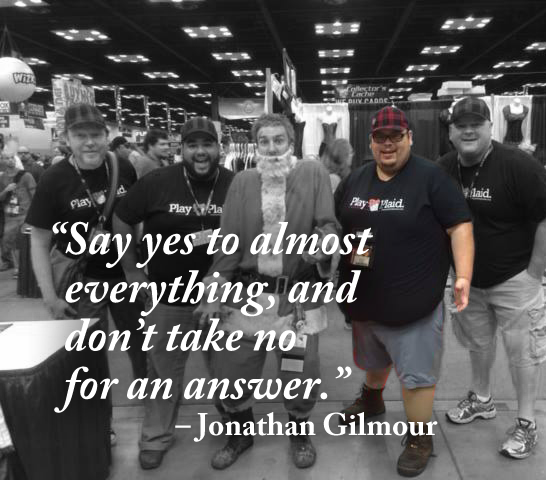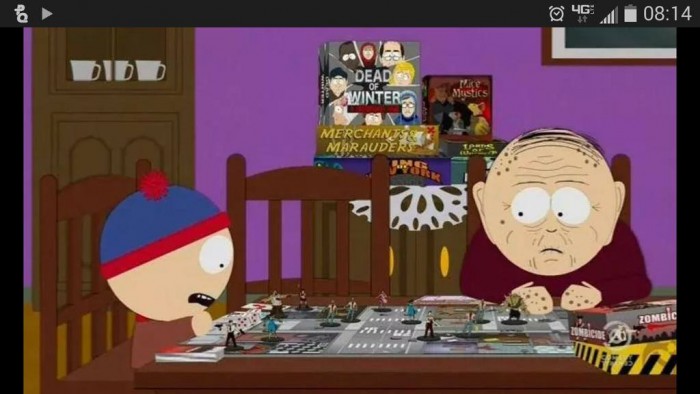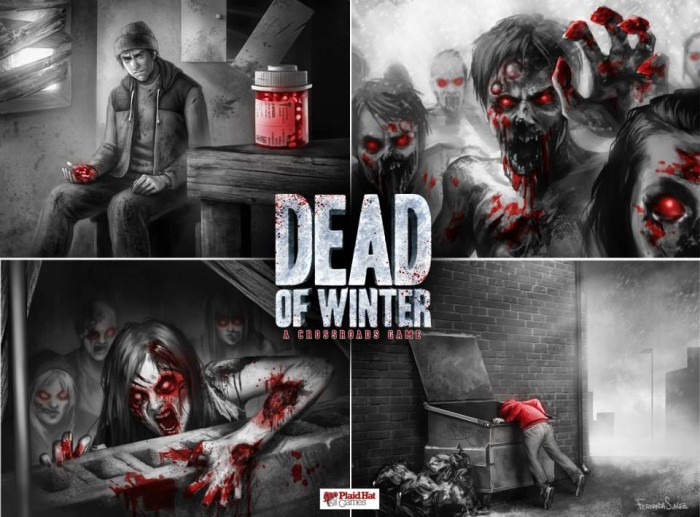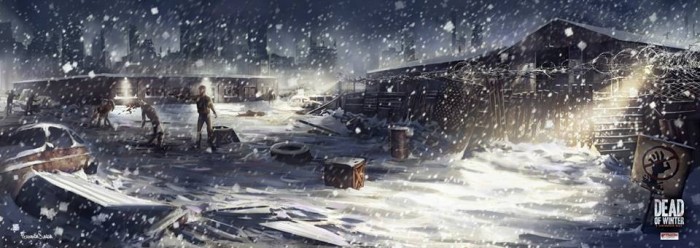
Tell us about yourself – Who are you? What do you do?
Hello! I’m Jonathan Gilmour! I design games! I’m also a husband, and father of four kids. In my “real job” I work in a automotive parts factory programming robots.
This post has affiliate links, which directly support Andhegames.com at no extra cost to you. If you have any questions about anything recommended, let me know. – Andrew
If I’ve never played your games before, what’s the first one I should try?
Well, I am incredibly proud of the work that Isaac and I did on Dead of Winter, so I suggest starting there.
One fact that we probably don’t know about you:
I used to sing soprano in choir at school.
What tabletop games (including digital board/card games) are you playing most right now?
I am enjoying the heck out of Shadowrun: Crossfire. I’ve also been playing a lot of Omen: Reign of War and thoroughly enjoying the latest version of it.
What are your all-time favorite tabletop games?
Cosmic Encounter and Nations are the only two games I have rated a ten on BGG currently. Though I have a hard time picking.
What draws you to make games?
I love doing creative things, and solving problems, so it’s a really good fit for both of those.
What are you not naturally good at, that you’ve learned to do for your work?
I am not an extrovert, so I have had to work really hard on putting myself out there into the community and interacting with people.
Describe your process (or lack thereof) when making games. How do you reach your final product?
Well, it’s kind of a brute force method. I like to prototype early and fail fast. I’ll do multiple iterations of a game in a single day if I have time. I start with writing down a ton of notes and then try to flesh the core of those notes into something. From there, I try to flesh the game out further.
What design-related media do you consume on a regular basis?
I’m a huge fan of both Daniel Solis’s blog and Cardboard Edison.
What are some tool/programs/supplies that you wouldn’t work without?
I work in Gimp and a program called Card Maker, which is an incredible tool. You also won’t find me without my trusty guillotine paper cutter.
What’s your playtesting philosophy? How often/early do you playtest?
I subscribe to the Fail Faster philosophy of design. I start playtesting early and as often as possible. Sometimes back to back to back if time affords it.
What are some of the biggest obstacles you’ve faced in your work, and how have you overcome them?
Time is the biggest obstacle for me. Fitting in working on all the projects on my plate on top of a full time job and family. And then staying motivated for all of that.
How do you handle life/family/work balance?
I put my family first. We eat supper together every night. I spend time with them before getting into design work after they go to bed. It results in lots of late nights, and a general lack of sleep.
Do you have a second job? If so, what do you do? If not, when/how did you quit your day job?
I do, I work in a plastics factory programming robots. I’m hoping that maybe this year will be the year to change that.
How many hours/week do you generally devote to game design? How many to other business-related activities?
An average week would be 16-18 hours. My main job is 40-50 hours a week, sometimes more.
What one piece of advice would you give aspiring game designers?
You can never playtest enough. If you think you are done, you are not. Playtest some more.
What’s the best advice about life that you’ve ever received?
Say yes to almost everything, and don’t take no for an answer.
Who would you like to see answer these questions?
Oh man, there are tons of great designs and publishers I look up to! My short list: Scott Almes. Patrick Nickell (Crash Games) Uwe Rosenberg Stefan Feld








[…] never playtest enough. If you think you are done, you are not. Playtest some more.” – Jon Gilmour “Don’t attack design problems one at a time. Consider pairs together. Use one problem to […]